Pirate metrics: how to create an email campaign based on the AARRR principle. Part 4

On Pechkin's blog on Habré, we write a lot about interesting techniques for working with email newsletters . Earlier, we considered common mistakes when creating forms in mail letters, and today we bring to your attention an adapted translation of the note from the Sendwithus service team about which approaches to the development of letters help to increase their conversion. The first part of the material can be read here , the second - here , and the third - here .
Creating a referral program based on feedback and recommendations
Testimonials (or recommendations) attract a lot of attention in the startup world, because they are vital for the growth of your company, especially in the early stages. Basically, this situation is due to the fact that marginal costs for reviews (usually in the form of describing the merits of a product or service) about a product are much lower than for other marketing channels.
')
The recommendations are certainly good because you can resort to their help at any stage of the funnel, and even earlier - to the stage of attraction.
Funnel inside the funnel
Since you can get advice from the user at almost any point in interacting with him, in this chapter we will give you some practical tips that you can follow at every stage of the user’s life cycle.

Before writing this chapter, we talked with our friend Ivan Kirigan about what the process of creating a referral program based on reviews should be and what it means to embed email marketing in it. We learned three basic tips that should not be forgotten when developing a loyalty program and luring users into a sales funnel.
1) Advertising your referral program is not such a bad thing.
During the conversation, we came to the conclusion that specifying links to your referral program from multiple sources, including your website and letters to customers, does not diminish the effectiveness of the program as quickly as it may seem at first glance.
In general, people are much more indifferent to what you write than you think. Mostly because they spend much less time reading your letters than you do. Sometimes it takes a lot of time and patience to become recognizable to customers.
The danger lies in the fact that, if you are used to checking everything in practice, you can empirically come to the conclusion that the constant and widespread mention of your program gives the best results. Of course, it is better not to reach extreme situations, but it’s still worth trying different options.
2) Easy wins should be prioritized.
The number of marketing and growth-hacking teams is clearly growing. However, if you are a small company and you do not consume so many resources to scatter them, it is important that low-cost experiments be your priority.
Ivan mentioned the Dropbox experiment, and I rummaged around and found their corresponding letter in my mailbox. The bottom line is that there is a simple script added, which says that Dropbox "offers you more disk space if you recommend the service to friends."
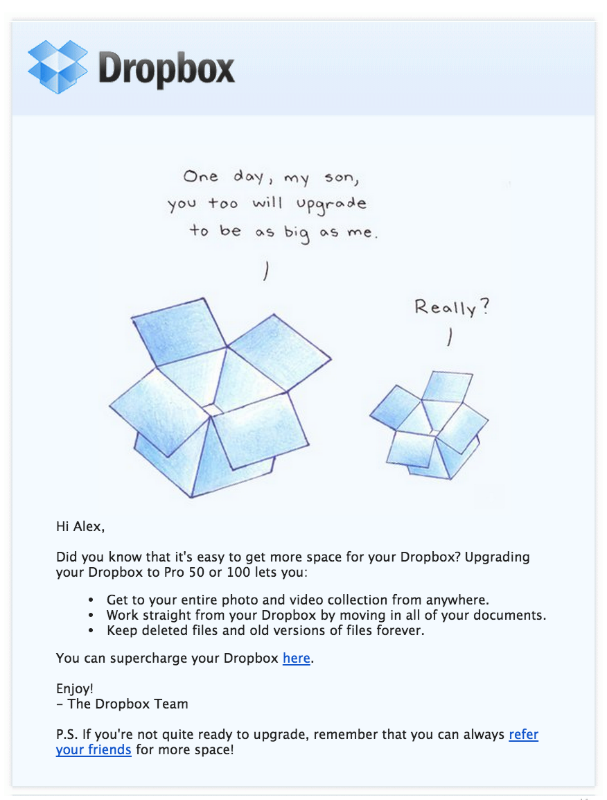
This quick, 15-minute test increased attendance of the referral program by 15%, even though it sounds like cheap advertising.
3) Scale your queries
Those who have just registered, ask for one tweet. When you make sure that your new client is comfortable with you and he is optimistic - you can ask him to recommend you to friends.
Everything is very individual, but in general you can imagine it as a funnel inside the funnel. The more stages customers have gone through, the more actively they will participate in your loyalty program and more value your product.
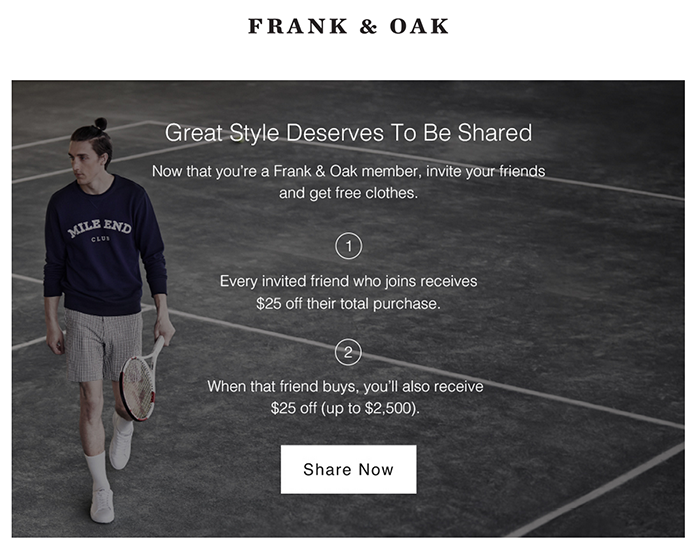
This Frank & Oak letter is wonderful, but not because of the cute background or design, but because of the timing. You get it after joining their regular customer program - The Hunt Club.
In the field of e-commerce, it is logical to push newly registered users to purchase. But as soon as the client enters the status of loyal, you can send him a letter entirely focused on his participation in the referral program.
Tips for each step
1. Add a letter asking you to recommend you to the structure of your onboarding campaign.
One of the most disappointing things for a startup is to get active users who love your product, but they just don’t need it. For various reasons: because of the cost, volume, improperly planned timing. But you still got to this point, absolutely do not want to think that all this was in vain.
If you notice people who are interested in your product but are not ready to become active users, give them the opportunity to share a link - this can make a huge difference for you.
The bonus, which they will receive, simply by sharing the link, may somewhat reduce the price of the product, and push them to the decision to purchase.
Any recommendations written by leads that in any other case would be lost give them [leads] a non-zero value. This can raise your average LTV (customer value) across your entire customer base, which means improving your ROI (return on investment) in cost at the customer acquisition stage.
2. Use headlines
When you have overcome all the difficulties of developing and implementing your complex referral program, you need to give all this a title. See how Everlane did it.

The title in this letter is very simple: a logo, two sections with goods, “about us” and a link to your personal account, which tracks your past recommendations and gives all the necessary information on how to get more bonuses.
This refers us to the idea of the gradual recognition of your loyalty program by customers. Sometimes the user should see a reminder about you several times, and only then he will be ready to give recommendations.
3. Benefit from the enthusiasm of users.
If it takes some time between selling and delivering a product, use it while your customers are looking forward to receiving the product.
Airbnb perfectly brightens up user expectations. When you book a stay (for example, at a hotel), Airbnb sends you a letter with a guide, a map with the place of stay marked on it, and contact information for the Airbnb support service and your hotel information desk. Moreover, they encourage you to participate and their referral program.
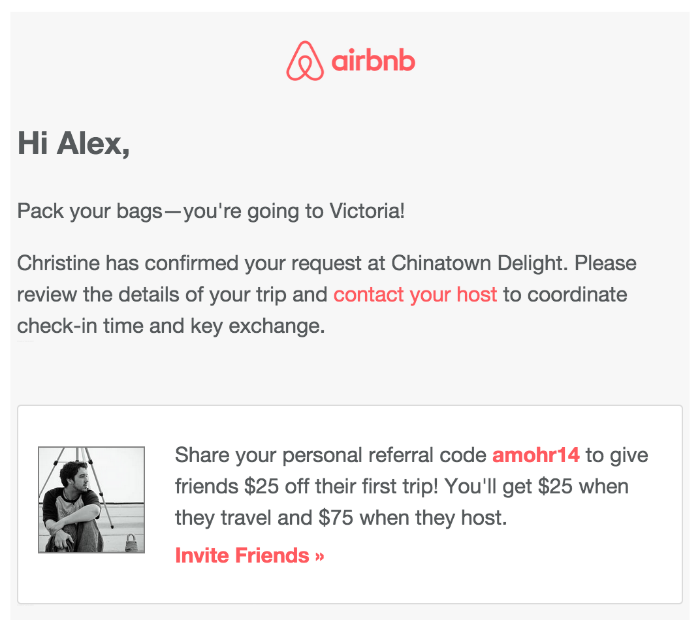
This is an effective way to take advantage of the time and inspiration of the client in the period between the reservation and the trip itself. In addition, it is very simple - because this is exactly the case when you yourself want to send a letter to a friend with recommendations. In general, it is best to benefit from user inspiration.
4. Make your invitation letters informative and beautiful.
All efforts made to make your users fall in love with your product will be in vain if your invitation letter does not fulfill its tasks.
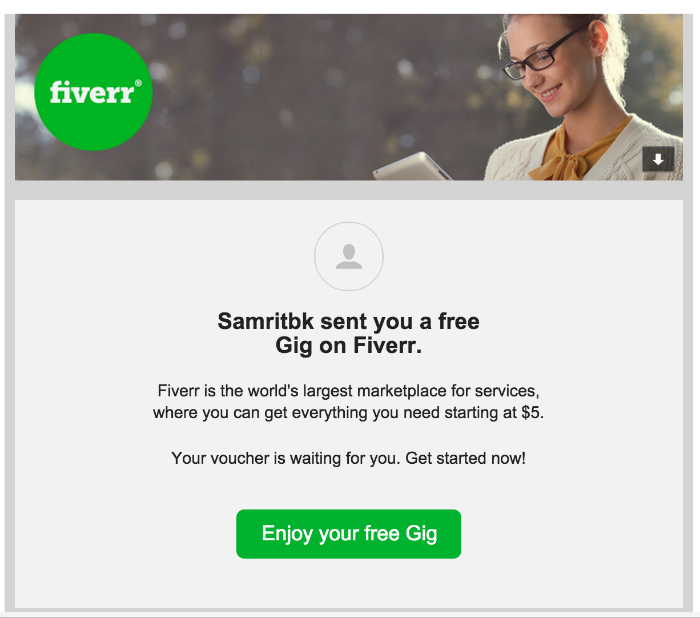
The best thing you can do in an invitation is to make it easier. Briefly write about what your company or service is doing (remember that the person may never have heard of you), place the CTA-button with a unique name that will make it clear to the user what he will receive if he clicks it: a discount, a free sample , etc.
5. Do not forget about the letter-bills
At work, we encounter different transactional letters, looking for good ideas, errors in implementation and missed opportunities. The latter category is almost always invoice letters.
Again, at any time you can reasonably assume that your user has some positive impressions of your product, and you want to make sure that this feeling can be turned into something more [re-sale].
For many companies, billing may be their last interaction with the user for a while, so this point is simply missed.
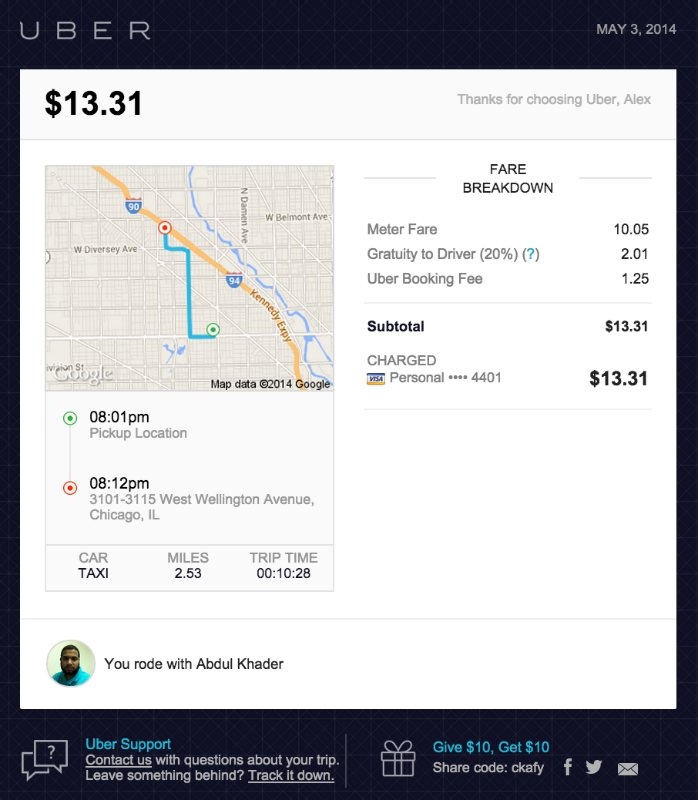
Remember this when you receive a letter from Uber. You heard about the application, downloaded it, created an account, added a credit card and paid for a trip around the city.
At this stage, you usually already know whether you will use their service again or not. If so, the only thing left to do with your positive impression is to share it.
In fact, the effectiveness of letter-bills is extremely undervalued, we will focus on this in the next chapter when we talk about income: how to get income, measure it and increase it.
Source: https://habr.com/ru/post/270821/
All Articles